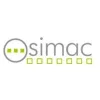Becky
Webmistress
- Joined
- Mar 25, 2003
- Messages
- 7,424
- Reaction score
- 1,511
With MP3 player use at an all time high, it is no suprise that electronics companies are develping innovative software technology to make the experience all the better. In fact, there is a project called Semantic Interaction with Music Audio Contents (SIMAC) funded by the European Commission doing just that.
The project, made up of five partners, has been working on a piece of software that identifies key elements of a song (for example: tempo, chord patterns, rhythm and timbre). It uses this information to analyse the favourite types of music of a particular listener, and recommend tracks they may also like.
"The goal is to be able to have as complete a description of a piece of music as a human being can do," says Xavier Serra, director of the Music Technology Group at the Universitat Pompeu Fabra in Barcelona, Spain [one of the five partners]. "That's beyond the current state of our knowledge. But what we can do now is enough to develop music recommendation systems based partly or totally on the automatic generation of descriptors."
The software developed by SIMAC is available to try on their website, where you can find further information on the project.
Further reading available at New Scientist and SIMAC
The project, made up of five partners, has been working on a piece of software that identifies key elements of a song (for example: tempo, chord patterns, rhythm and timbre). It uses this information to analyse the favourite types of music of a particular listener, and recommend tracks they may also like.
"The goal is to be able to have as complete a description of a piece of music as a human being can do," says Xavier Serra, director of the Music Technology Group at the Universitat Pompeu Fabra in Barcelona, Spain [one of the five partners]. "That's beyond the current state of our knowledge. But what we can do now is enough to develop music recommendation systems based partly or totally on the automatic generation of descriptors."
The software developed by SIMAC is available to try on their website, where you can find further information on the project.
Further reading available at New Scientist and SIMAC

